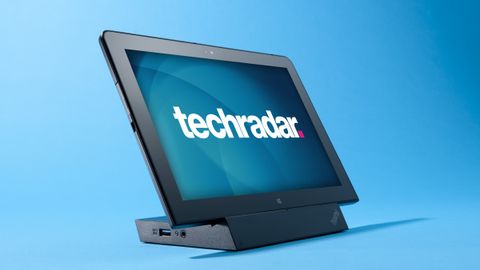Why you can trust TechRadar
With the ThinkPad 10, Lenovo has crafted the modern-day equivalent of a mid-range tablet, or with the right accessories, a high-end thin-and-light laptop. This is an intriguing category, particularly in the Windows hybrid market, which essentially offers two computing modes for the price of one.
So, how does it compare to the competition? In terms of features, it exceeds the performance and value of low-to-mid-range tablets like Dell's Venue series and Asus' Transformer Books. And while it beats the price of higher-end Windows tablets like the Surface Pro 3 and hybrids like Lenovo's own Lenovo Yoga 2 Pro, performance, screen resolution and size all suffer in comparison.
While Apple's iPad Air and iPad Mini 2 with Retina display compete with the ThinkPad 10 in terms of price, both devices offer higher-quality displays. On the downside, neither offers as comprehensive an ecosystem as Lenovo does.
We liked
As far as pure tablets go, there's a lot to like here. Five things in particular stand out. First, the ThinkPad 10's performance is remarkable for such a small device running full-fledged Windows on an Atom SoC. You can operate this device like you would any laptop, in a full multi-tasking usage mode without ever becoming frustrated at its speed or responsiveness. On top of this, it is quiet, cool, and the battery lasts a long while.
Plus, the screen is vibrant and clear, and works great for reading Kindle books up close. And when you're ready to create content, the Ultrabook keyboard is a revelation. It is more comfortable to type on than any other small format keyboard I've ever used – including Apple's mini-keyboard. FInally, the dock is a stroke of genius, and transforms the ThinkPad 10 into a desktop – or an all-in-one PC.
We disliked
There isn't a whole lot to dislike about the ThinkPad 10. It's not Lenovo's fault, but the biggest problem I had was with Windows 8.1 itself. It is simply not as elegant or as evolved as iOS or Android, and disappoints in some big ways, like the absence of entertaining games and other useful apps in the Store. Or the dual-interface nature of the OS and the desktop mode, which is wholly unsuitable for touch. Not to mention that major apps, like Kindle, still continue to suffer from crashes.
Mechanically, a few aspects of the Ultrabook Keyboard stood out as minor negatives. First, the trackpad is not responsive enough. Even after adjusting the settings, I found myself constantly wrestling with it to click-drag and scroll. Eventually, I just altered my behavior and started using the touch screen. I guess that's the point?
Second, I found myself wishing that I could adjust the angle of the tablet while holstered in the Ultrabook Keyboard. And while I appreciated the non-powered nature of the Ultrabook Keyboard – it draws power from the tablet itself – I wish it were backlit. The absence of such makes working in low-light situations a challenge.
Finally,there should be a stronger physical bond between the two. As it currently stands, it does not take a whole lot of force to dislodge the ThinkPad 10's screen from the keyboard's slot. If you have young kids or work in an environment where things are moving around quite a bit, you'll probably feel the same way.
Final verdict
With the ThinkPad 10, it feels like Lenovo is attempting to create more than a tablet. The optional Quickshot Cover, Ultrabook Keyboard, Touch Case, Tablet Dock, Stylus, and more all feel more like a platform or ecosystem than a device. Given Lenovo's business appeal, this is a smart move. But is it viable as an everyday system?
My short answer is yes, with the few caveats noted above. I lugged the ThinkPad 10 around with the Ultrabook Keyboard for two weeks as my everyday device and, aside from some minor annoyances with the keyboard's touchpad and the occasional Windows hiccup, I found myself surprised by its usability. And when at home, I was able to plug the tablet into its dock and connect a keyboard, mouse, and full-size display to make for a dual-display desktop replacement. (Just no games, of course.)
Ultimately, price is the key consideration here. When you throw in all the peripherals with the price of the ThinkPad 10, that's an extra $250 to the $599 price tag, butting up against Lenovo's Yoga series of products. However, neither the Yoga nor Yoga Flex allow you to fully detach the screen as a takeaway tablet.

Is there a moral imperative for businesses to share data?

Why sovereign AI infrastructure is driving worldwide adoption of Generative AI

Real life 6G speed tests revealed by Japanese tech giants — 100Gb/s transmissions could become the norm for mainstream wireless network data transfer within a few years
